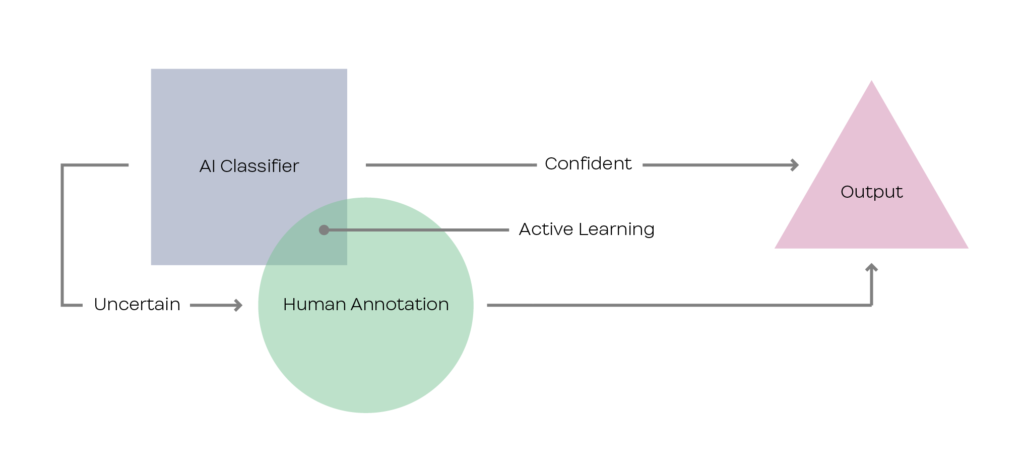Artificial Intelligence and Machine Learning has captured a large share of academic and industry attention during recent years, both in terms of new capabilities and the implications to society. Many state-of-the-art techniques are able to provide important capabilities for different fields, yet we are far from creating artificial general intelligence. Human-In-The-Loop (HITL) is a branch of Artificial Intelligence (AI) where natural (human) and Artificial (machine) intelligence combine to create more accurate AI algorithms. In such systems, humans are involved in every stage of the algorithm’s output by creating a feedback loop from training to testing stages resulting in a more accurate model. This approach is a blend of supervised learning (using labelled training data) and active learning (interacting with users for feedback).
Recent advances in the field of AI have given rise to techniques such as active learning and co-operative learning . The back bone of any machine learning algorithm is data, and usually these datasets are unlabelled (e.g. Images). In the training stage, a human is required to label this dataset (the output, e.g. cat or dog) manually. This data is then fed to the machine learning model to train; this is referred to as supervised learning. In this technique the algorithms learn from labelled data to then predict unseen cases. Using what we already know we can go deeper and create more sophisticated techniques to uncover other insights and features that exist in the training dataset with the goal of getting more accurate and automated results.
As can be seen in the graph below, in the cases when the AI classifier is not confident about its output the need for human intervention arises which in turn leads to a more accurate output.

In the testing and evaluation phase, humans’ and machines’ expertise are combined by allowing the human to correct any inaccurate results that has been produced. Specifically, the human in this case will correct the labels that the machine was not able to spot with a high accuracy (i.e. classified a dog for a cat). The same approach is carried out by the human when the machine is overly confident about a wrong prediction. In each iteration the performance of the algorithm will increase allowing the path towards automated lifelong learning by mitigating the need for future human intervention. At the end of such work the results are then sent to a domain expert to make decisions that enables bigger impact. For example, in a hospital, images of tumours could be assessed by the model, comparing new images with all previous records and once the output is produced it could then be sent to a cancer expert to further classify and feedback to the model.
Allowing HITL will significantly change the way business workflows are carried out at scale by creating a pipeline that includes data collection, model training, testing, deployment and maintenance. However, much work on roles and definitions of HITL is needed to create an impactful Machine Learning ecosystem. Knowing what the most efficient ways are to incorporate human-machine know-how will require hybrid processes in order to enable future paths for automated systems which extend beyond Machine Learning workflows to other fields such as robotics. This is a very exciting time to be involved in this field as industry and academia are pushing the limits further every day.